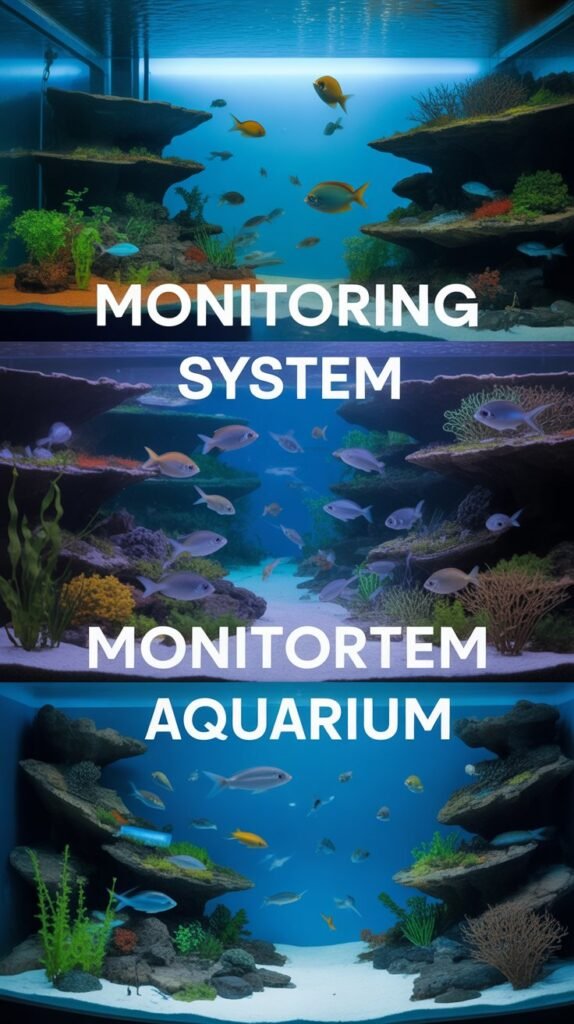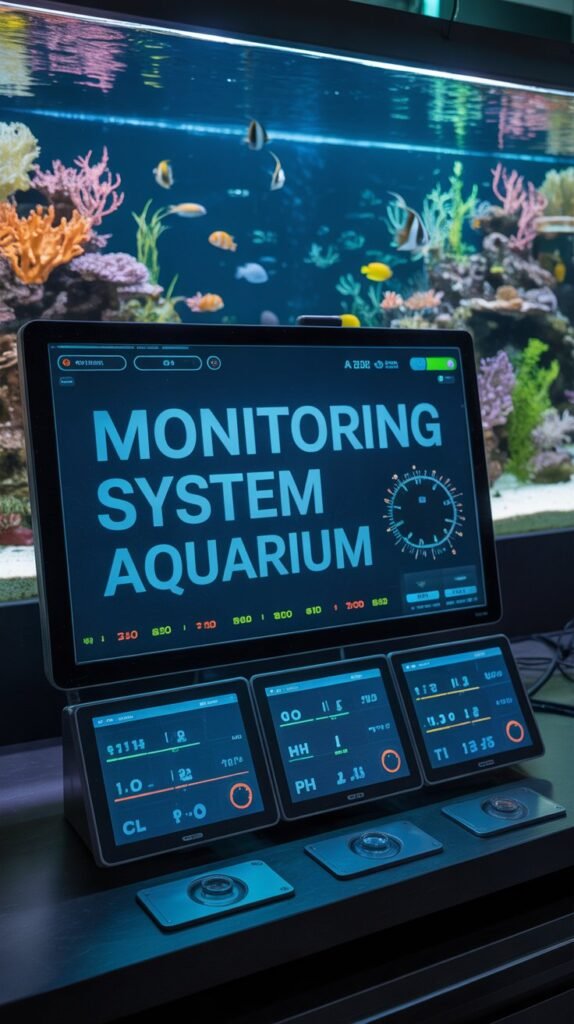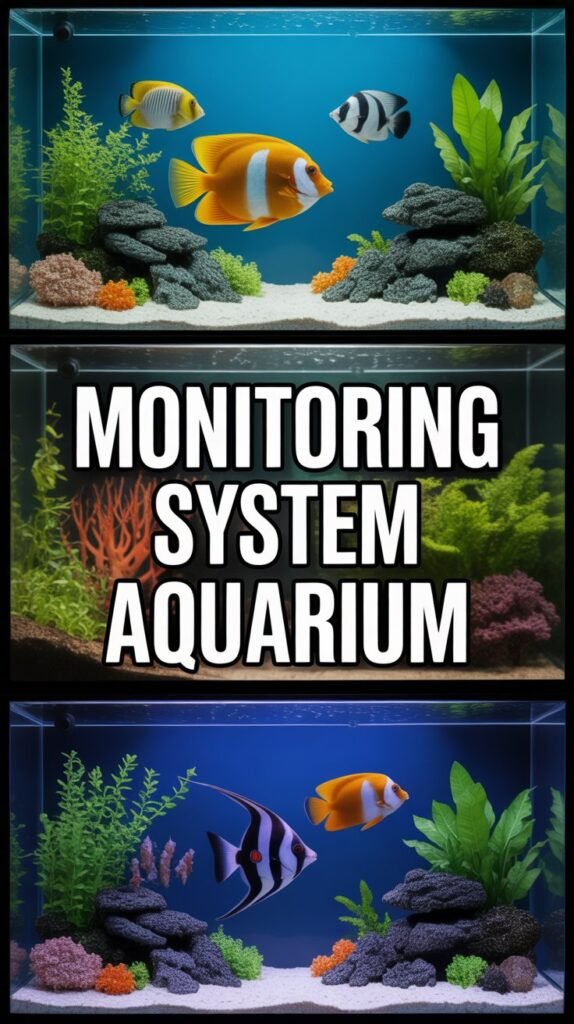An aquarium monitoring system is one of the most valuable tools for aquarists who want to maintain a stable and healthy environment for their aquatic life. Whether you keep freshwater fish, saltwater fish, planted tanks, or reef systems, an aquarium monitoring system helps track essential water parameters, temperature, lighting conditions, filtration performance, and overall tank stability.
Aquariums are delicate ecosystems. Even small fluctuations in water quality can cause stress, diseases, or even death in fish and plants. That’s why more hobbyists and professionals use monitoring systems to automate tank care, avoid emergencies, and gain real-time insights into their aquarium’s health.
This detailed guide explains what an aquarium monitoring system is, how it works, its components, benefits, types, features, installation tips, maintenance practices, and the best water parameters to monitor. By the end, you will understand everything needed to make your aquarium safer, healthier, and easier to manage.
What Is an Aquarium Monitoring System?
A monitoring system aquarium is a combination of digital sensors, controllers, and software used to monitor and regulate important water parameters in real time. It provides continuous data about the environment inside the aquarium and alerts you whenever something goes wrong.
Typical monitoring parameters include:
- Temperature
- pH level
- Ammonia
- Nitrite
- Nitrate
- Dissolved oxygen
- Water level
- Salinity (for marine tanks)
- Lighting schedule
- Filter flow rate
Some advanced systems can also automate dosing, regulate CO₂, operate heaters, monitor evaporation, and even send notifications to your phone.
Why You Need a Monitoring System for Your Aquarium

A successful aquarium relies on stability. Fish and plants cannot adapt to sudden changes. A monitoring system offers:
1. Real-Time Water Quality Tracking
You no longer need to guess the conditions of your tank. Sensors provide accurate, real-time data.
2. Early Warning Alerts
Sudden temperature drops or ammonia spikes can kill fish quickly. A monitoring system sends instant alerts so you can take action.
3. Reduced Stress for Fish and Plants
Stable conditions prevent diseases and encourage natural behavior.
4. Automation Convenience
Many systems can automate:
- Feeding
- Lighting
- Dosing fertilizers
- CO₂ regulation
- Top-off (ATO)
This reduces workload and human error.
5. Consistent Results
Aquarium monitoring systems ensure your tank remains healthy even if you travel, forget changes, or have a busy lifestyle.
6. Better Long-Term Data
Historical records help you understand tank trends and improve management.
Components of an Aquarium Monitoring System

A monitoring system aquarium typically includes various devices that work together to gather data and maintain tank stability.
1. Sensors
Sensors detect and measure individual parameters. Common sensors include:
Temperature Sensor
Monitors the water temperature to prevent overheating or cooling.
pH Sensor
Shows how acidic or alkaline the tank water is.
Ammonia/Nitrite/Nitrate Sensors
Essential for monitoring the nitrogen cycle.
Water Level Sensor
Detects evaporation and prevents filter or pump damage.
Salinity Sensor
Used in marine and reef tanks.
ORP Sensor
Measures oxidation-reduction potential in saltwater systems.
Dissolved Oxygen Sensor
Important for heavily stocked or low-flow tanks.
2. Controller or Hub
This acts as the “brain” of the system. It collects data from sensors and performs automated actions, such as:
- Adjusting heater settings
- Turning on/off lights
- Running CO₂ regulators
- Sending mobile alerts
3. Smart Plugs or Power Bars
These allow the system to control connected devices such as heaters, filters, and lights automatically.
4. Software/App Dashboard
Modern aquarium monitoring systems come with a mobile or web app where you can view:
- Water parameters
- Graphs and history
- Alerts
- Device status
You can also control components remotely.
5. Additional Modules
Some systems include optional add-ons:
- Auto Top Off (ATO) systems
- Dosing pumps
- Leak detectors
- Feeding timers
How an Aquarium Monitoring System Works
Here’s how these systems ensure smooth aquarium operation:
Step 1: Sensors Collect Data
Each sensor continuously tracks a specific water parameter.
Step 2: Data Sent to Controller
The controller processes the sensor data.
Step 3: Software Displays Information
Tank data is displayed in your app in real time so you can monitor the aquarium from anywhere.
Step 4: Alerts Triggered if Something Is Wrong
If a parameter exceeds the safe range, you receive:
- Phone notifications
- Email alerts
- Sound alarms
Step 5: Automatic Adjustments (Optional)
Advanced systems can:
- Turn the heater on or off
- Regulate CO₂
- Dose fertilizers
- Adjust pumps
- Activate ATO
This creates a stable aquarium environment without constant manual intervention.
Important Water Parameters to Monitor

Monitoring the right parameters is crucial for maintaining a healthy aquarium. Below are the must-track parameters:
1. Temperature
- Freshwater: 24°C–28°C
- Saltwater: 25°C–27°C
Temperature swings stress fish and harm bacteria.
2. pH Level
- Freshwater: 6.5–7.5
- Saltwater: 8.0–8.4
pH influences chemical reactions and fish health.
3. Ammonia
Ideal level: 0 ppm
Ammonia is toxic even in small amounts.
4. Nitrite
Ideal level: 0 ppm
Nitrite interferes with oxygen transport in fish.
5. Nitrate
Safe level: Below 20–40 ppm
High nitrate causes algae blooms and stress.
6. Dissolved Oxygen
Essential for fish breathing and plant health.
7. Salinity (Marine Tanks)
Typical range: 1.023–1.026 specific gravity
8. Water Hardness (GH/KH)
Affects pH stability and mineral availability.
9. CO₂ Level (Planted Tanks)
Ideal: 20–30 ppm
CO₂ helps plant growth but too much harms fish.
Types of Aquarium Monitoring Systems
Depending on your setup and needs, you can choose among several types of monitoring systems.
1. Basic Monitoring Systems
These include:
- Digital thermometers
- pH meters
- Test kits
Suitable for beginners, but require manual testing.
2. Semi-Automated Monitoring Systems
These offer:
- Bluetooth-enabled sensors
- Automatic data logging
- Alarm notifications
Good for intermediate aquarists.
3. Fully Automated Monitoring Systems
These advanced systems include:
- Controllers
- Smart power bars
- Automated dosing
- ATO
- App connectivity
- CO₂ and lighting control
Ideal for serious hobbyists, reef keepers, and professional aquarists.
Benefits of a Monitoring System Aquarium
A monitoring system offers multiple benefits that improve aquarium success:
1. Stable Water Conditions
Stability is the foundation of a thriving aquarium.
2. Better Fish and Coral Health
Stress-free fish live longer, breed better, and suffer fewer diseases.
3. Improved Plant Growth
Precise CO₂, lighting, and nutrient monitoring lead to healthier plants.
4. Prevention of Emergencies
Alerts allow instant response to dangerous changes.
5. Time Savings
Automation reduces daily manual tasks.
6. Reduced Maintenance Costs
Early detection prevents costly equipment failures.
7. Perfect for Busy Schedules
You can maintain a healthy tank even if you travel or work long hours.
How to Choose the Best Aquarium Monitoring System
Before buying a monitoring system, consider the following:
1. Type of Aquarium
- Freshwater
- Planted
- Saltwater
- Reef
Different systems offer different features.
2. Number of Parameters to Monitor
Decide what you want to track:
- Just temperature and pH
- Full water chemistry
- Lighting and CO₂
- Salinity and ORP for reef tanks
3. Connectivity
Choose between:
- Wi-Fi
- Bluetooth
- App-based
- Cloud-based
4. Automation Compatibility
If you want full control, choose systems that can regulate:
- Lights
- Heaters
- Dosing
- CO₂
- Pumps
5. Budget
Monitoring systems range from basic to advanced.
6. Integration With Existing Equipment
Ensure compatibility with:
- Heaters
- Filters
- Dosing pumps
- CO₂ regulators
Installation Tips for an Aquarium Monitoring System
To get the best performance:
1. Place Sensors Appropriately
- Avoid placing sensors too close to heaters.
- Keep pH sensors away from CO₂ diffusers.
- Avoid high-flow areas unless required.
2. Calibrate Sensors Regularly
Sensor accuracy depends on proper calibration.
3. Organize Cables Safely
Keep wires tidy and away from water.
4. Use a Dedicated Power Strip
This avoids overload and keeps things organized.
5. Test Alerts Before Relying on Them
Simulate problems to confirm the system works correctly.
Maintenance Tips for Aquarium Monitoring Systems
Monitoring systems need routine care:
- Clean sensors regularly
- Replace calibration fluids
- Change probes every 1–2 years
- Update the software and firmware
- Check for algae buildup around sensors
- Inspect cables for damage
Proper maintenance ensures accurate readings and long-lasting performance.
Common Problems in Aquarium Monitoring Systems and How to Fix Them
1. Incorrect Readings
Possible causes:
- Dirty sensors
- Old probes
- Air bubbles
Clean and recalibrate the probe.
2. Wi-Fi or App Issues
Restart your controller and modem.
3. Sensor Drift
Replace worn-out probes.
4. Delayed Alerts
Ensure notification settings are ON in the app.
Conclusion
A monitoring system aquarium is one of the best investments for maintaining a stable, healthy, and thriving aquatic environment. Whether you keep freshwater fish, aquascapes, or advanced reef tanks, a monitoring system gives you full control and peace of mind. With features like real-time monitoring, automated adjustments, and instant alerts, you can prevent emergencies, enhance fish health, and reduce workload.
By choosing the right system and maintaining it correctly, you can achieve long-term success and enjoy your aquarium without stress.
FAQs About Monitoring System Aquarium
1. What is an aquarium monitoring system?
It is a combination of sensors, controllers, and software used to monitor and regulate water parameters and equipment in an aquarium.
2. Why is monitoring important in aquariums?
Monitoring helps prevent dangerous fluctuations in water quality, protects fish, and maintains a stable ecosystem.
3. Which parameters should I monitor?
Key parameters include temperature, pH, ammonia, nitrite, nitrate, dissolved oxygen, salinity, CO₂, and water level.
4. Can I monitor my aquarium remotely?
Yes, most advanced systems allow remote access through smartphone apps.
5. Do planted tanks need a monitoring system?
Yes, especially if using CO₂ or high lighting, as stability is crucial for plant growth.
6. How often should sensors be calibrated?
Calibration should be done monthly or according to manufacturer guidelines.
7. Is monitoring necessary for small aquariums?
Yes, smaller tanks experience parameter changes faster, making monitoring even more important.
8. Are monitoring systems expensive?
Basic systems are affordable, while advanced controllers with multiple sensors cost more but offer full automation.

